
What to Do if You See a Mountain Lion, Coyote, or Bear
A little preparation goes a long way in the outdoors.
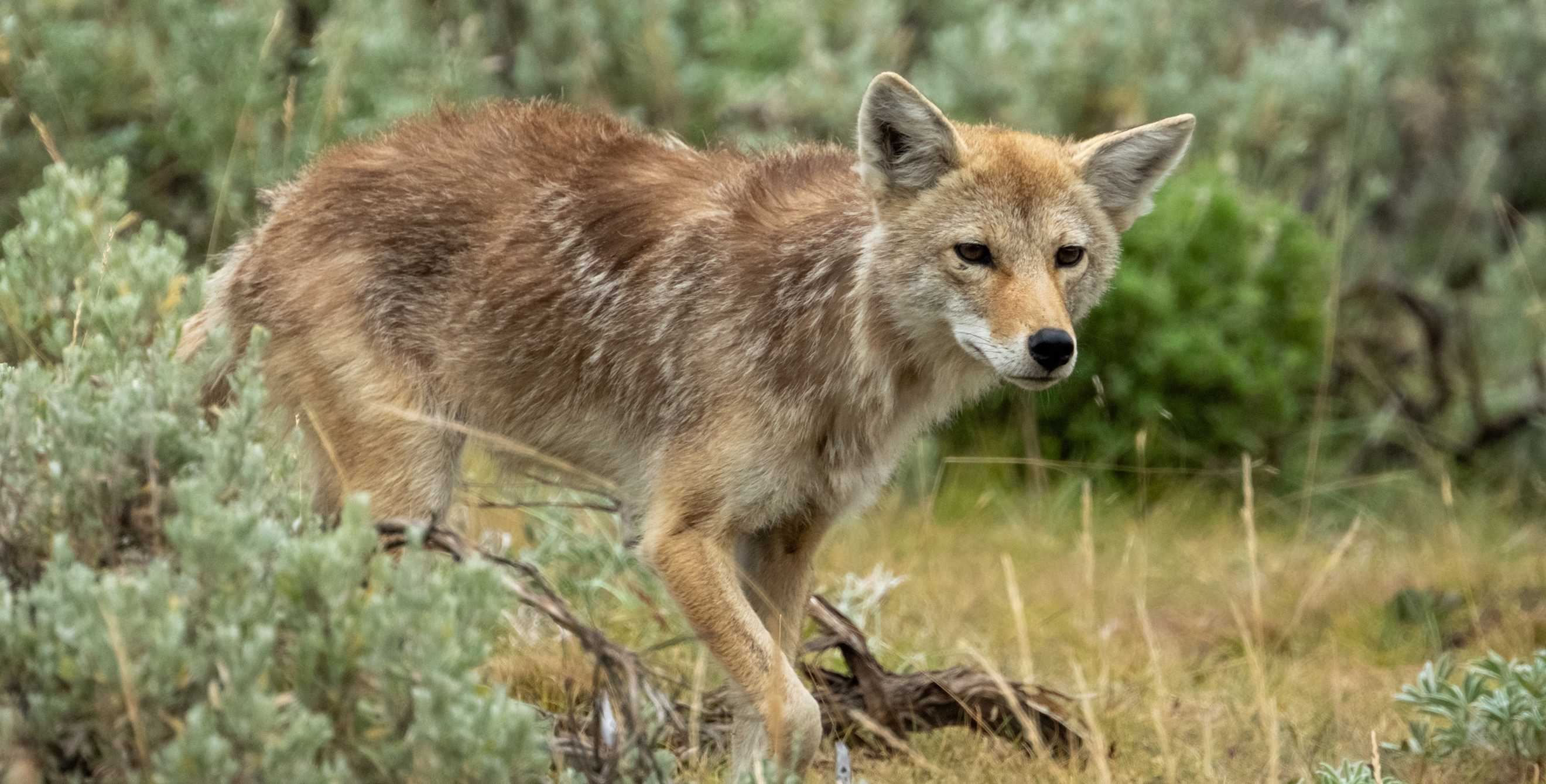
Outdoor adventures can be memorable, especially when you’ve had the good fortune to spy a wild animal. “With all the massive changes that human beings have brought into our shared environment, it’s a wonder that large animals still exist,” says David Mizejewski, naturalist for the National Wildlife Federation.
How can you embrace the sheer awe of seeing a mountain lion, coyote, or bear in the great outdoors? It helps to remember that negative interactions with wild animals are rare, and occur less often than injuries resulting from a fall on the sidewalk, according to Mizejewski. It also helps to know how to minimize your risks if a wildlife encounter should occur.
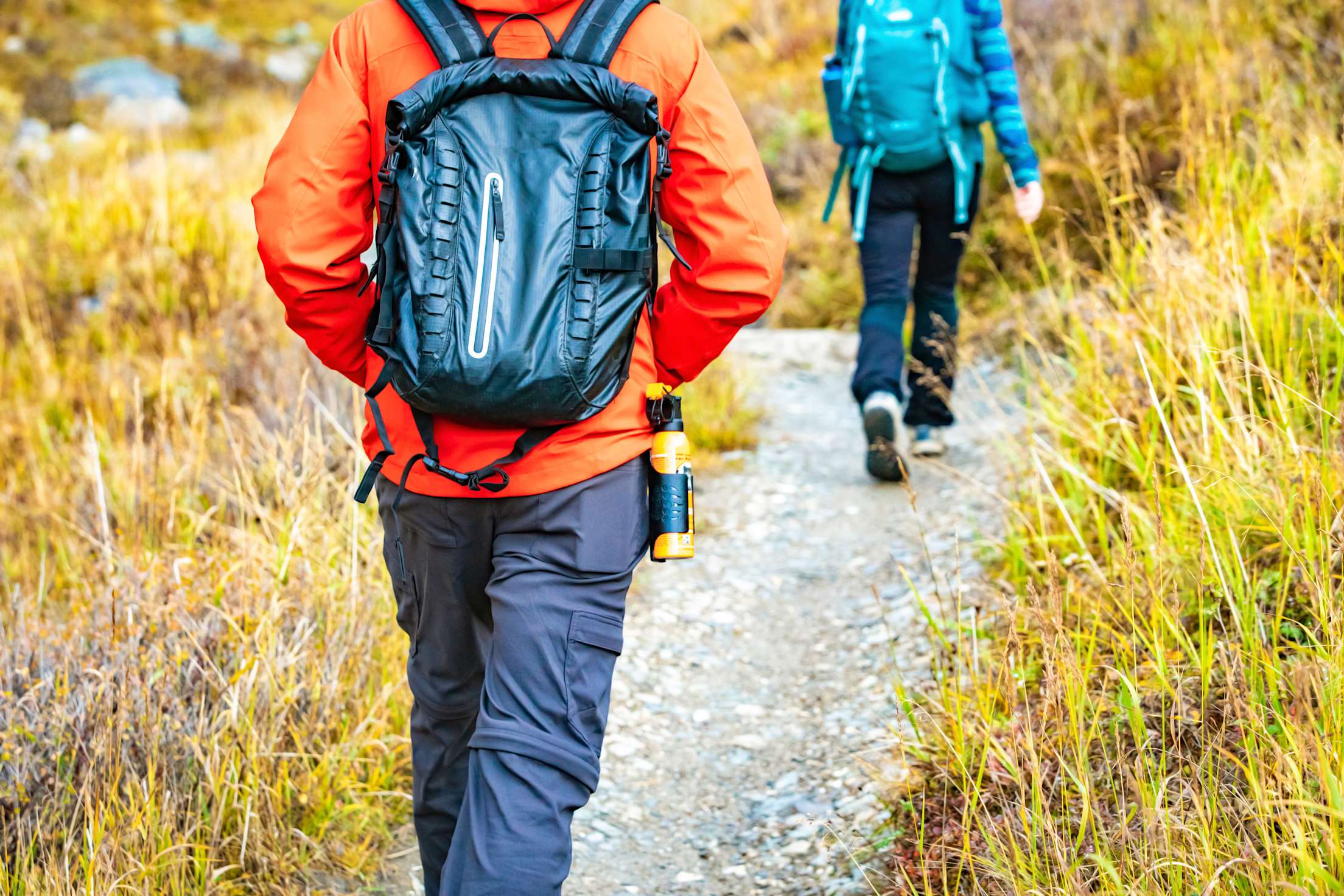
Essential Tips
Do your research—and bring a friend. When choosing the location of your hike, ask park staff or search online for information about the trail to determine if there have been recent wildlife sightings. Hike with other people, in part because chatter along the trail serves as an advance warning to wildlife that humans are approaching.
Be aware of your surroundings. It may be tempting to wear headphones so you can catch up on your podcasts, but it limits your ability to hear what’s going on around you. If you’re hiking with children or pets, keep them nearby and don’t let them go ahead where you can’t see them. Even if you have off-leash recall (or “voice control”) with your dog, it’s safer to have them on leash—and in many places, it’s required.
Pack and dress smartly. Wear bright or contrasting clothing so that you stand out. Rapid movement, like running or biking, may trigger an animal’s instinct to chase. If you’re doing those activities regularly in places frequented by large wildlife, you may want to consider bringing bear spray or an air horn.
Know what to do in the rare worst-case scenario. Don’t approach or try to feed any wild animals. If attempts to avoid or scare off animals fail, and you are attacked, fight back while calling for help. (The only exception is with grizzly bears. Once they’ve made contact, you should lie flat on your stomach and play dead. If the attack continues, fight back.)
Here are some other tips for co-existing peacefully with wild animals on the trail.
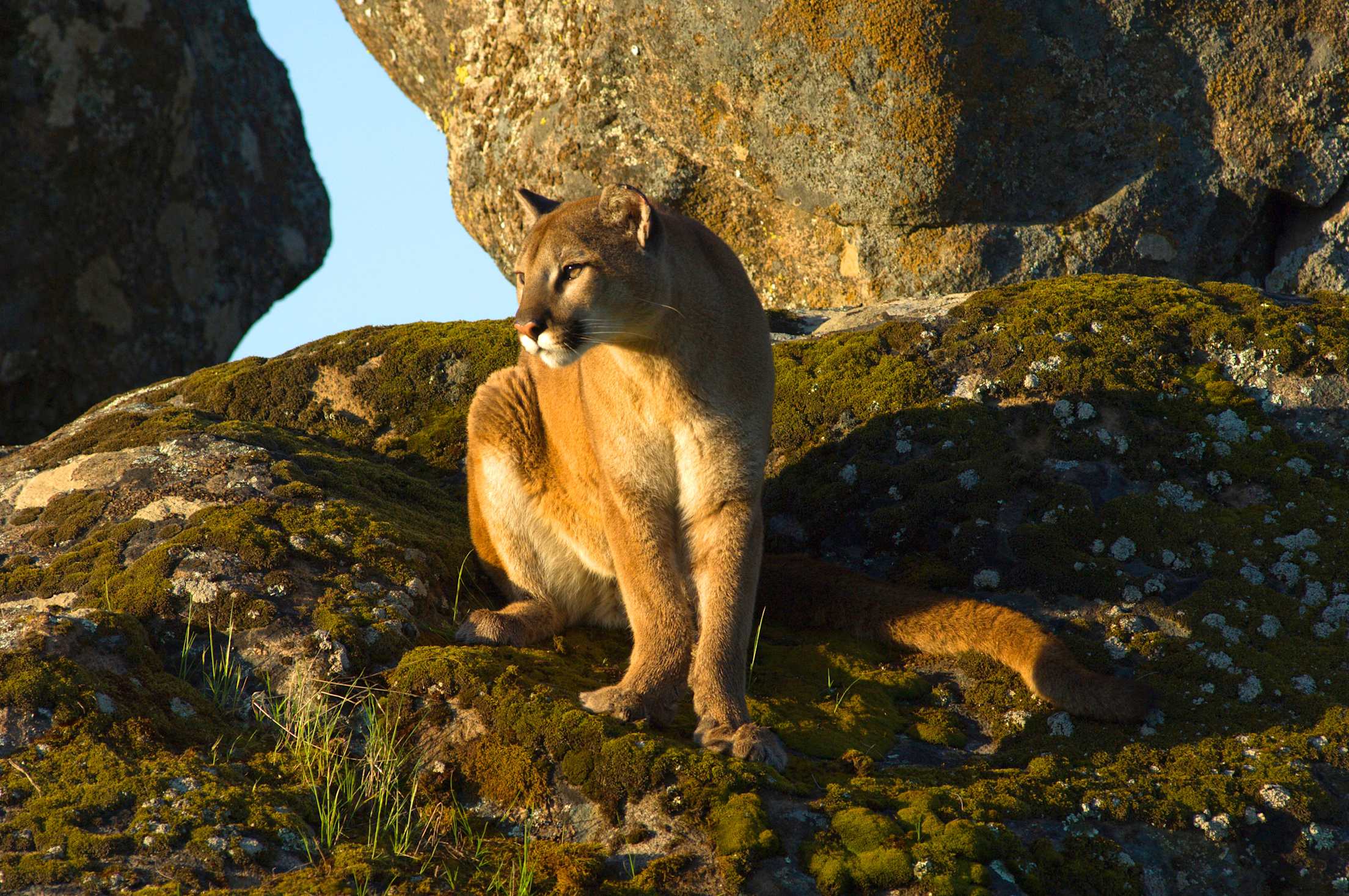
Mountain Lions
The range for mountain lions runs from the western parts of Canada and the United States (with a small population in Florida) and south through most of South America. “Mountain lions and people have been coexisting in the Americas for tens of thousands of years,” says Brent Lyles, executive director of the Mountain Lion Foundation. “Their range used to stretch across North America, but they were hunted extensively, which diminished their population.”
Mountain lions are most active at dawn and dusk. Adjusting your hike outside of those times doesn’t guarantee you won’t see one, but it does minimize the chances. If you see a dead animal on your hike, it may or may not be a mountain lion’s kill, but steer clear regardless.
If you see a mountain lion, Lyles advises that “your job is to convince it to go elsewhere.” Make yourself appear larger, wave your arms, make noise, and maintain eye contact. Don’t bend over or crouch down, which can trigger a predatory response. Give the mountain lion space to leave the area by slowly backing away while keeping an eye on it.
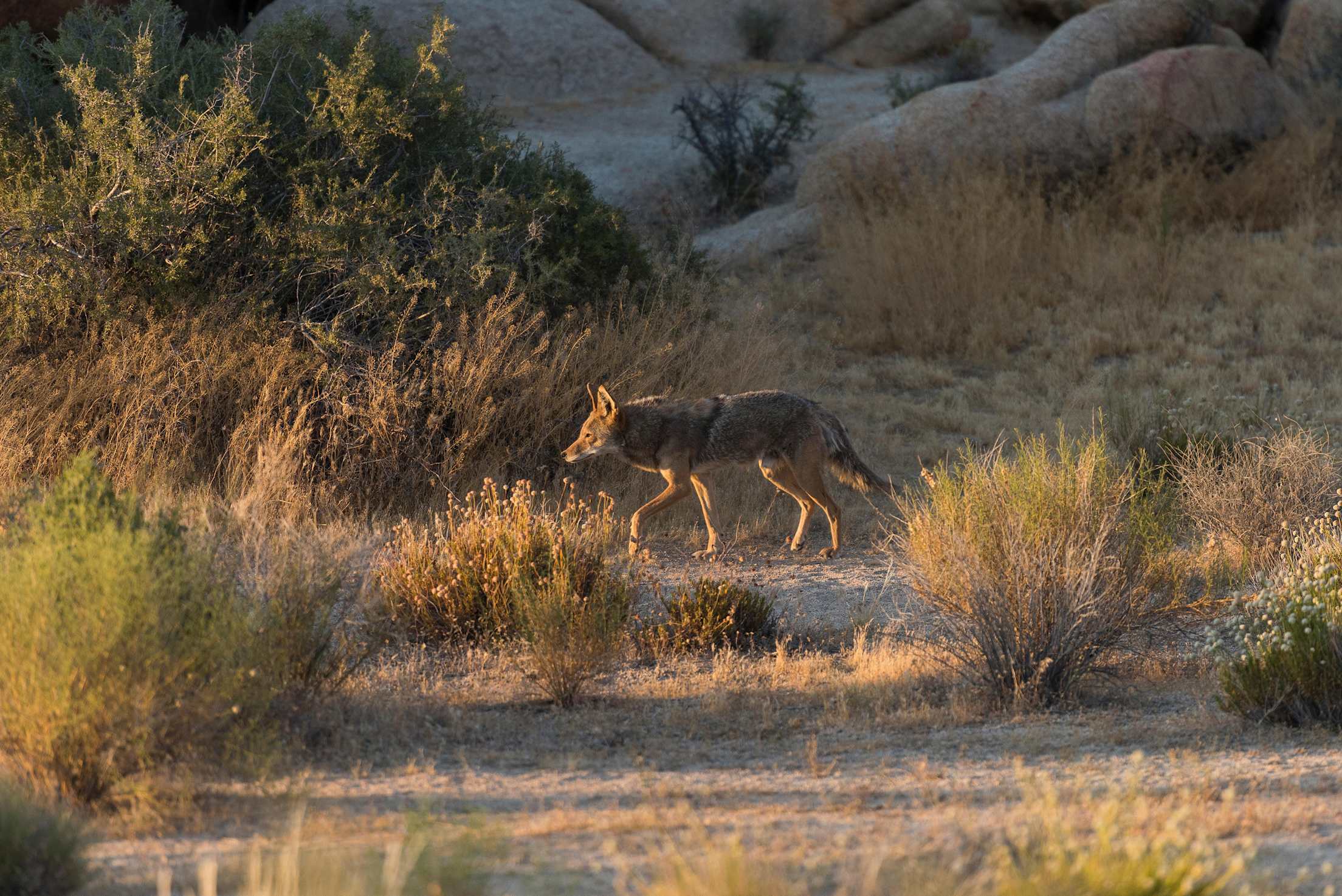
Coyotes
Endemic to the western two-thirds of North America, coyotes are relatively diminutive—some varieties are smaller than Labrador retrievers by half. “They’ve proven to be incredibly intelligent, adaptable, and resilient, and the chances of seeing one, especially in the West, is pretty high,” says Camilla H. Fox, founder and executive director of Project Coyote. “If you do see one, stop for a moment to relish the experience, if the distance feels comfortable.”
Coyotes are curious animals, and if you encounter one on the trail, it may stop to take a look at you. Coyote pupping season starts in April and can last into summer. While coyotes generally want nothing to do with us, they’re likely to be a bit bolder at this time because they’re protecting their young.
If a coyote approaches you and doesn’t move along quickly, Fox recommends “hazing” techniques, such as making direct eye contact, appearing bigger by standing tall with your arms outstretched or opening your jacket, making noise, and even throwing small objects to scare but not harm the animal. Continue hazing the coyote until it gets the message and leaves.
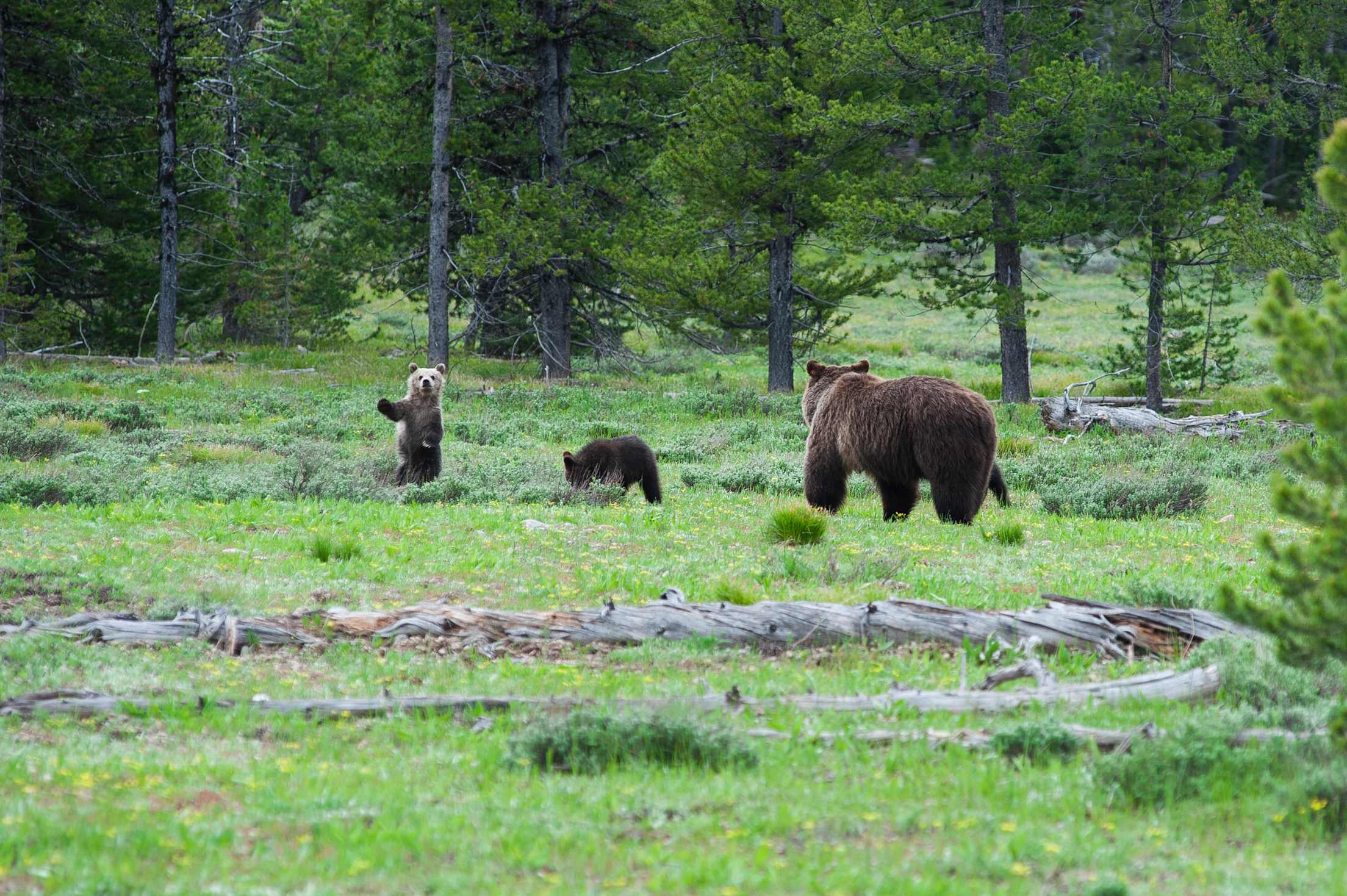
Bears: Black and Grizzly
Black bears’ range covers most of the North American continent, while grizzly bears are concentrated in Alaska, northern Canada, and northern Montana and Idaho. “Even when bears are present, they’re largely elusive,” says Mizejewski. “Your chances of bumping into them are slim, but you can minimize those chances by storing food in bear-proof containers, or hoisted in a tree a bit of a distance from your camp.”
If you do see a bear, how you respond depends on the situation. It's also important to consider what kind of bear it is. Don’t rely solely on coloring. Black bears are usually darker and smaller than grizzlies in places where the two coexist. Black bears also have longer and less rounded ears and a straighter profile from forehead to nose. Grizzly bears have larger shoulder humps, a more “dished” or concave facial profile, and longer front claws that are evident in their tracks.
If a black bear is in your path, look big and make noise to intimidate it into running away. Leave the bear an escape route and move away slowly either backward or sideways, which allows you to keep an eye on the bear and avoid tripping.
Grizzlies aren’t as intimidated by aggression. Remain still, talk calmly in low tones, and move away slowly.
Unlock exclusive Member benefits when you book through AAA Travel.